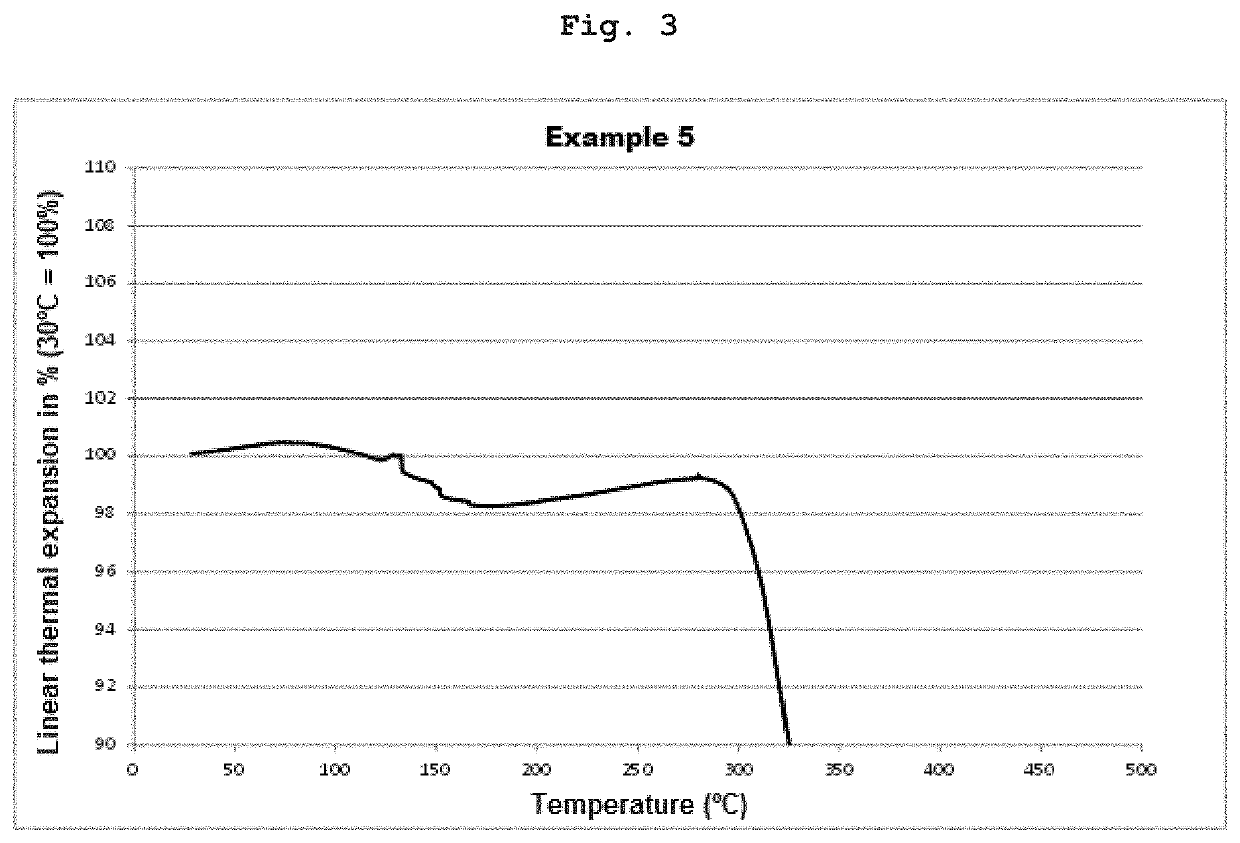Burn-out dental modelling material
- Summary
- Abstract
- Description
- Claims
- Application Information
AI Technical Summary
Benefits of technology
Problems solved by technology
Method used
Image
Examples
embodiment examples
Examples 1 to 9
[0102]Modelling Materials
[0103]The components listed in Table 1 were mixed with each other homogeneously in the stated quantities. The components were weighed out and stirred at approx. 50° C. for 1 hour and then at room temperature for approx. 16 h (overnight). In the case of pigment- and filler-containing compositions, the pigment and the filler respectively were stirred into UDMA, the substances were then homogenized and dispersed three times with a three-roll mill with a gap width of 10 μm and then stirred into the remaining, already dissolved organic matrix (at least 1 hour at room temperature). Finally, optional further additives such as thickeners were added to the paste and stirred again for at least 1 hour.
[0104]
TABLE 1Modelling materials for stereolithographyComposition [wt.-%]Component123456789Monomer (a)UDMA1)42444948.95 4936.15344932TEGDMA2)272510.0420 2020.88172027Bis-GMA3)————————10Initiator (b)Irgacure 8194) 0.95——0.95————TPO5)—0.950.95—0.950.920.9...
example 10
[0105]Modelling Materials—Comparison Examples
[0106]Analogously to Examples 1 to 9, the comparison materials listed in Table 2 were prepared.
[0107]
TABLE 2Comparison materials for stereolithographyComposition [wt.-%]ComponentV1*V2*V3*Monomer (a)UDMA1)—74 40TEGDMA2)—25 25SR348C16)59——SR48017)40——Initiator (b)TPO5)0.950.90.95Inert component (c)———DyeSudan IV10)0.050.10.05Further componentsWax particles13)——34*Comparison material1-15)see Table 116)Bisphenol A dimethacrylate with 3 ethoxy groups (Sartomer)17)Bisphenol A dimethacrylate; ethoxylated 10 times on average
example 11
[0108]Measurement of the Thermal Expansion
[0109]For the determination of the thermal expansion of the materials, cylinders with a 6 mm diameter and a height of 6 mm were produced stereolithographically with a printer from the materials described in Tables 1 and 2. The cylinders were cured in layers and then post-exposed in a post-exposure device at a wavelength of 400 nm with an intensity of 10 mW / cm2 for 5 minutes. The cylinders were then placed in the sample chamber of a thermomechanical analyzer (Q400 type from TA Instruments with a macro-expansion probe) and heated at a heating rate of 5 K / min to 800° C. The linear thermal expansion of the cylinders during heating up and the thermal decomposition in the temperature range of from 30° C. to 800° C. was measured in an air atmosphere. The contact force of the measuring probe was 0.1 N.
[0110]In FIGS. 1 to 4, the expansion curves for the materials from Examples 2, 4, 5 and 6 are shown. In all cases, the thermal expansion remained sign...
PUM
| Property | Measurement | Unit |
|---|---|---|
| Temperature | aaaaa | aaaaa |
| Temperature | aaaaa | aaaaa |
| Temperature | aaaaa | aaaaa |
Abstract
Description
Claims
Application Information
 Login to view more
Login to view more - R&D Engineer
- R&D Manager
- IP Professional
- Industry Leading Data Capabilities
- Powerful AI technology
- Patent DNA Extraction
Browse by: Latest US Patents, China's latest patents, Technical Efficacy Thesaurus, Application Domain, Technology Topic.
© 2024 PatSnap. All rights reserved.Legal|Privacy policy|Modern Slavery Act Transparency Statement|Sitemap



